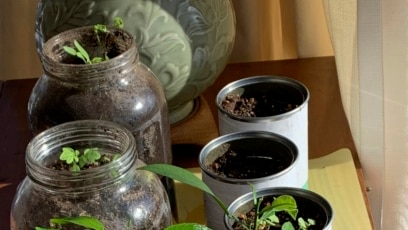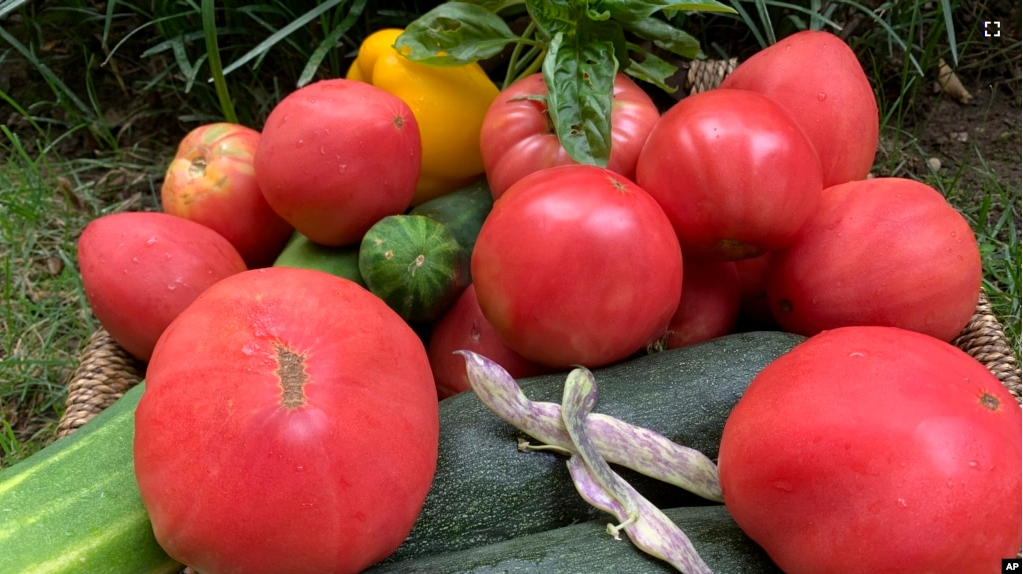Many of the vegetables we grow in our gardens produce seeds, which can grow into plants if harvested and stored correctly.
Late summer is the perfect time to start collecting them, reports Associated Press gardening expert Jessica Damiano. She warns upfront about the importance of the fruit you choose for seeds.
Make sure the seeds are from plants that are heirloom, or open-pollinated, kinds. These are plants in their original forms. Their seeds will produce plants with the same qualities as their parents.
Hybridized plants usually produce the vegetables sold in big food stores. They are created by breeding two or more different kinds of plants to capture the best qualities of each. Attempting to grow seeds from hybrids will not lead to happy harvesting, however.
The resulting plants will not have the expected qualities but instead carry the genes of just one of its parents. And, it is impossible to identify which parent that will be. For this reason, it is best not to grow seeds from store-bought food.
Many plants become cross-pollinated in the garden. Pollinators, other insects, animals and wind spread pollen from one plant to another. To ensure the seeds you collect will grow into plants that match their parents, give them space! Place different kinds of the same crop as far apart as possible when planting a home garden.
To avoid cross-pollination surprises, plant only one kind of each vegetable from which to harvest seeds. If you want to save tomato seeds, for example, grow only one kind of tomato in your garden.
If that feels too limiting, go ahead and experiment. Choose heirloom plants so the risks from cross-pollination are reduced. The plants will be fine even if they are not what you expected.
Store seeds in a cool, dry place in a covered glass jar or paper envelope away from ripening fruit. The temporary addition of a drying element to the jar will remove any remaining wetness. But remove it after a few days to avoid over-drying.
Here is how to collect and save seeds from some common homegrown crops.
Lettuce
At the end of the growing season, lettuce plants will grow a flower that will develop seed heads. The process is called bolting and the seed heads are called a puff.
When the puff is dry, remove the stem. Put the puff in a paper bag, close the bag and shake. The seeds will come off the flower and fall to the bottom of the bag.
Basil
Basil seeds are tiny, so separating them from the small flower is a slow and careful process. When plants bolt at the end of the season, permit flowers to remain until they fade completely. Clip them off and place them in a sieve. Then use your fingers to push them against the bottom of the sieve.
Beets and carrots
Beet and carrot plants produce seeds only in their second year, after a period of cold storage. In areas with cold winters, simply leave plants in the ground over winter.
In warm climates, you have to create “winter” indoors: At the end of the first season, cut the plants down to 5 centimeters. Carefully dig up roots, and store them in a refrigerator or other cool place. Replant them outdoors the following spring.
When the leaves of second-year beet plants turn brown, remove the seed stalk from the top of the plant and place it in a paper bag. Store in a cool, dry place for at least two weeks, then give the bag a good shake to separate the seeds. Pour them onto a plate and blow on them to separate the chaff.
Let second-year carrot flowers dry on the plant, cut them off, and dry them further in a paper bag for a week or two. Then treat them in the same way as beets.
Peppers
Choose the best-looking pepper from your healthiest plant and let it remain on the plant until it is overripe and wrinkled. Slice it in half and remove the seeds. Throw away any that are discolored or otherwise undesirable. Spread seeds in a single level on thick paper and let them dry in a warm place. Do not put them in direct sunlight. Shake the seeds around from time to time to ensure even drying. The process should take about a week.
Eggplant
Permit an eggplant to over-ripen on the plant until it becomes hard and wrinkled, and loses its shine and color. Cut it open, remove its seeds and place them in a bowl of water. Stir the water to wash off anything that might be sticking to them. Then use a cloth to dry the seeds gently. Leave the seeds on a piece of cloth, shaking them a little every day, until completely dry. This can take several weeks.
Green beans
Green beans can produce a lot during the season. To get seeds, leave developing pods on one plant until they are completely dried and brown. Next, cut the pods off the plant and place them in a cool, dark spot to dry further. Later, remove the seeds and spread them on cloth. Let them harden there for a few days.
I’m Dorothy Gundy. And I’m Caty Weaver.
Jessica Damiano wrote this story for the Associated Press. Caty Weaver adapted it for VOA Learning English.
______________________________________________________________
Quiz – How to Collect and Save Vegetable Seeds for Next Year

Start the Quiz to find out
______________________________________________________________
Words in This Story
open-pollinated –adj. a plant pollinated naturally by birds, insects, wind
original –adj. existing from the beginning
hybridized –adj. offspring of parents that are not similar
breed –v. to keep animals or plants in an effort to produce more of a particular kind
stem –n. the long, thin part of a plant that supports the leaves and flowers
fade –v. to become weaker and slowly lose strength and freshness
sieve –n. a device used in cooking that separates small particles through a series of small holes
refrigerator –n. an electric device that keeps food cold
stalk –n. the thick stem of a plant that grows up from the ground
chaff –n. the seed coverings of plants that are not eaten but thrown away
wrinkled –adj. a small line or fold on a surface such as skin, tissue or cloth
pod –n. a long, thin part of a plant with seeds inside
